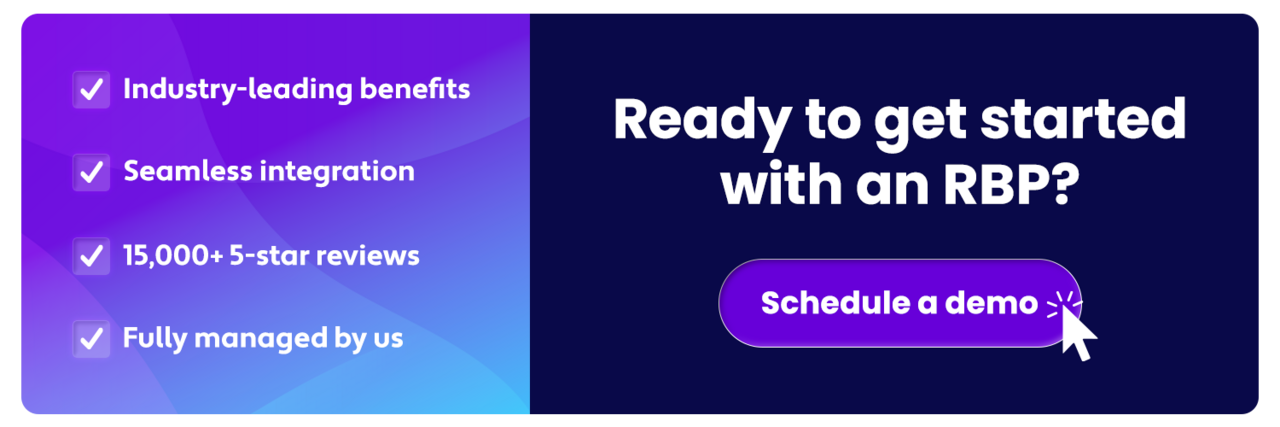What we'll cover
What is a tenant satisfaction survey?
Why tenant satisfaction surveys matter
Types of tenant satisfaction surveys
How to measure tenant satisfaction
Questions to include in a tenant satisfaction survey
How to create and send a great tenant survey
Turning feedback from a tenant survey into action
Turn tenant feedback into proactive improvements
A tenant satisfaction survey is a tool that property managers can use to measure how well they’re meeting resident expectations, wants, and needs. Measuring resident satisfaction is particularly important because it allows all property management professionals—from managers to leasing agents to maintenance teams—to understand how well they’re performing and start making changes to improve. More importantly, it allows them to actually measure whether those changes are having an impact.
Satisfaction surveys also help identify resident issues early, before they escalate or surface as negative public reviews. When implemented properly, they also improve retention rates and net operating income, allowing your business to grow.
Surveys work best when they’re used consistently and follow best practices. It’s not enough to run a survey without a clear plan in place, or to check a box. It needs to be deliberate and your team needs to be fully bought in. In this article, we’ll give you a practical guide to creating and running satisfaction surveys that drive real improvement for your residents and your team.
A note on language: The term “tenant satisfaction” has been used in the property management industry for a long time. Here at Second Nature, we prefer to think of renters as residents, because it humanizes them and emphasizes that they’re people, not just monthly rent checks. The industry is slowly evolving on language, and many people still use the term tenant, so we’ll use both in this article, but lean towards “resident.”
What is a tenant satisfaction survey?
A tenant satisfaction survey is a method of collecting feedback from your residents on how well you’re meeting their expectations, with the intention of making changes to your processes to improve the rental experience. The goal of the survey is to collect structured feedback from residents about their experience living at one of your properties.
A satisfaction survey is not just about identifying what complaints your residents have, but also where things are going well and where there might be easy wins to boost satisfaction. You want to use surveys as a tool for understanding overall satisfaction, not just dissatisfaction.
You can run surveys at different points in the leasing lifecycle, including move-in, lease renewal, the completion of maintenance work, or the midpoint of a lease. When used consistently, they don’t just provide valuable information to your internal team, they also help build trust and show residents that their voice is valued.
Why tenant satisfaction surveys matter
Satisfaction surveys can be beneficial in a number of areas. They give you deep insight into how you’re performing, which can help you:
- Drive higher retention, renewal rates, and positive Google reviews
- Uncover growing issues before they balloon into costly problems
- Make smarter decisions around policies and processes for maintenance, staffing, and upgrades
- Generate higher net operating income through improved resident experiences
- Shift from a reactive management style to a proactive approach
Types of tenant satisfaction surveys
There are a few different types of satisfaction surveys that you can implement, depending on your goals as a business. These generally correlate to specific points in the resident lifecycle. Here are some different survey types that you should consider:
- Move-in surveys: As you can probably guess, this type of survey is typically conducted shortly after a resident moves in. It can be helpful for understanding residents’ first impressions of you and what your resident onboarding process is like. It also starts the relationship off on the right foot, with residents feeling like their voice matters.
- Ongoing or annual surveys: It’s helpful to conduct a standardized survey at the same time each year. This helps track long-term satisfaction and patterns over time, which is especially helpful if your company is consistently growing, either in headcount or door count.
- Maintenance follow-ups: This survey type is helpful for measuring vendor performance, but also communication effectiveness and whether your overall maintenance process is fast and thorough enough.
- Pre-renewal or exit surveys: It’s important to understand why your residents are staying or leaving. For example, you may find that residents love your property and management company, but they’re pursuing homeownership or moving because of life circumstances. That’s extremely helpful in contextualizing your retention rate.
Using multiple survey types, rather than relying on just one, will give you a fuller picture of the resident experience, so long as you’re not overwhelming your residents with constant survey requests. Keep in mind, short, focused surveys tend to get better response rates, so breaking up one long survey into multiple touch points can be much more efficient.
How to measure tenant satisfaction
When you’re getting up and running with satisfaction surveys, it’s important to know what kinds of KPIs you’re going to use to evaluate the data. The particular KPIs you’re measuring will inform what kinds of questions you ask. For example, you might consider:
- Satisfaction scores on a 1-5 or 1-10 scale
- Net promoter score (NPS)
- Open feedback
Whichever KPIs you’re measuring, it’s important to track them over time in order to spot trends, especially as you change tools or policies, which might cause a significant shift in satisfaction. You should also consider segmenting data by portfolio or property type. For example, your multifamily residents might have a more positive opinion of your maintenance processes than single-family residents.
As much as quantitative data is important—and often easier to analyze—qualitative data is also highly valuable. Open response questions can provide more context to objective numbers, and might also reveal motivations and emotions that don’t come through otherwise.
Questions to include in a tenant satisfaction survey
There are plenty of different directions you can take your survey, and exactly what questions you include may depend on the areas of your business that you’re looking to optimize. We’ve categorized some sample questions by area of focus so that you can easily develop a survey that fits your needs. We’ve provided examples of questions better suited to single-family homes, and others better suited to multifamily communities.
- Property condition
- How would you rate the condition of your home on a scale from 1 to 10, with 1 being worst and 10 being best?
- How would you rate the cleanliness of your home on a scale from 1 to 10, with 10 being cleanest and 1 being least clean?
- How would you rate the landscaping and upkeep of outdoor areas at your property, on a scale from 1 to 10?
- Are there areas or features of your home that need repairs or replacement, or items you’d like to see modernized? (Leave this as an open response question.)
- Responsiveness
- How would you rate the process of submitting a maintenance request, on a scale from 1 to 10, with 1 being the worst and 10 being the best?
- How would you rate the communications you receive from your property management team after you submit a maintenance request? This can be a sliding scale from “too much communication” to “not enough communication,” with the midpoint being the correct balance.
- How would you rate the quality of work done by the maintenance team on a scale from 1 to 10, with 1 being the worst and 10 being the best?
- How would you rate the amount of time it takes to complete maintenance requests on a scale from 1 to 10, with 1 being the worst and 10 being the best?
- Staff interactions
- How true do you find the following statements?
- I know how to get in touch with my property management team when needed
- I know how to reach a property management team member in an emergency situation, even if it’s after business hours
- How professional would you say your property management team is on a scale from 1 to 10, with 1 being unprofessional and 10 being professional?
- How helpful would you say your property management team is on a scale from 1 to 10, with 1 being least helpful and 10 being most helpful?
- Describe the last interaction you had with a member of our team and how it went.
- How true do you find the following statements?
- Community experience
- How safe do you feel in your community on a scale from 1 to 10, with 1 being least safe and 10 being safest?
- Rank the following community amenities by how much you use them, from most used to least used.
- Pool
- Dog park
- Business center
- Fitness center
- Tennis courts
- Community clubhouse
- Have you had any issues with noise in the building, eg. from neighbors? Please tell us about them.
- If you could choose one new community amenity that you don’t already have available to you, what would it be?
- Likelihood to renew or recommend
- How likely are you to renew your lease on a scale from 1 to 10, with 1 being least likely and 10 being most likely?
- How likely are you to recommend your property management company to a friend or family member on a scale from 1 to 7, with 1 being least likely and 7 being most likely?
Note that you should use a mix of rankings, rating scales, and open-ended prompts in order to capture the most data possible. You should also always make it completely clear how the rating systems work and which end of the scale means what, in order to minimize confusion and inaccurate data.
Finally, make sure that you keep your surveys brief to encourage completion. Feel free to take some of these questions for your own survey, but we don’t recommend using them all in one survey.
How to create and send a great tenant survey
Now that we’ve covered what you should include in your surveys, let’s take a look at the steps you should follow as you build and send your survey.
1. Choose the right timing
Best practice is to send surveys at key touchpoints, like move-in, lease renewal, after a maintenance request, or half way through the lease. The timing you choose will depend on the types of information you’re looking to gather, so it’s ultimately a business decision.
2. Design a short and mobile-friendly survey
Residents don’t want to fill out long, complicated surveys, so keep things short and to the point in order to increase completion rates. We recommend aiming for about 5 questions, and no more than 10. Make sure that your survey is also optimized for mobile devices, which will also help increase participation.
3. Use the right tools
Make sure that you’re choosing the best survey tool for your needs. Popular tools include Google Forms, Survey Monkey, and Typeform, but you may have a survey feature built into your property accounting software. Each tool has its strengths and weaknesses, so do some research to make sure you’re getting all the features you need, and not paying for features you don’t.
4. Guarantee anonymity
Make sure that you’re emphasizing resident anonymity when asking about sensitive topics, like neighbor interactions. If you’re asking about less sensitive topics but still want to offer the option of anonymity, most survey tools will allow you to make email addresses optional. That way you can follow up with residents who choose to provide their information, but residents who wish to remain anonymous can still do so.
5. Add a clear introduction
It helps to contextualize why you’re surveying your residents. This is also a great opportunity to emphasize how much you value resident feedback, and the role it plays in your decision making as a business. This will help residents feel valued, increase honesty, and increase overall participation.
6. Send the survey and encourage participation
Make sure that you’re being respectful of your residents’ time, while also following up with them to increase response rates. For example, you can schedule a reminder email or add an in-app notification in their resident portal to remind them about the survey. You can also consider small incentives, like gift cards, or enter all participants into a raffle to receive a larger prize.
Turning feedback from a tenant survey into action
Of course, collecting all of this information is only valuable if it leads to meaningful improvements. So how can you take the feedback from your survey and put it into action?
Start by carving out time on your calendar to review results after each survey. Compare new results to previous feedback and look for patterns, changes, or recurring issues. From there, you can make a game plan on which items to tackle first. Prioritize quick wins that emerge across your survey data, like communication frequency, but keep a running list of larger projects and resurface them in your quarterly planning meeting. Survey insights can be used for long-term planning like budgets, staffing, and capital planning, too.
Make sure that you’re also communicating the outcomes of your survey, both internally and to residents themselves. While you don’t have to be fully transparent with every single data point, make sure that residents know what’s been changed as a result of their feedback. That will encourage more participation in future surveys, but also build a sense of trust. Internally, make sure the team is aware of how the company is measuring up and what changes you plan to make in response.
Turn tenant feedback into proactive improvements
Satisfaction surveys can help uncover issues like missed maintenance, poor communication, low renewal intent, and faulty processes. Moreover, it gives you a playbook to continuously improve your business. While juggling operations and retention can feel overwhelming, making time for satisfaction surveys can have a multiplier effect across the company.
If you want to drive better resident outcomes and increase your tenant satisfaction survey results, look to Second Nature’s Resident Benefits Package, which boosts retention, improves the resident experience, and protects you, your residents, and your properties—all with no extra work from your team.





